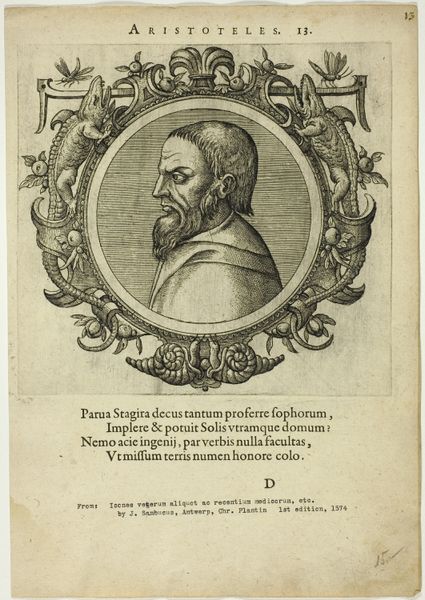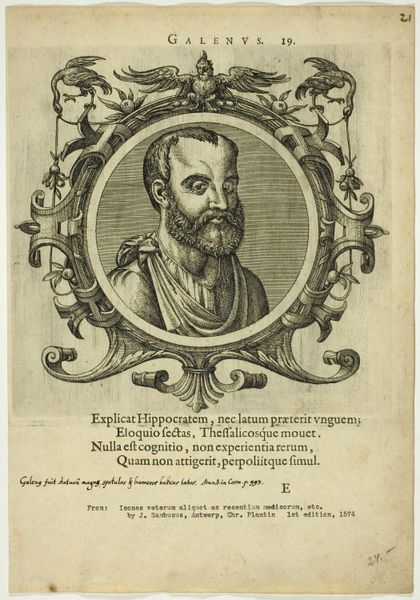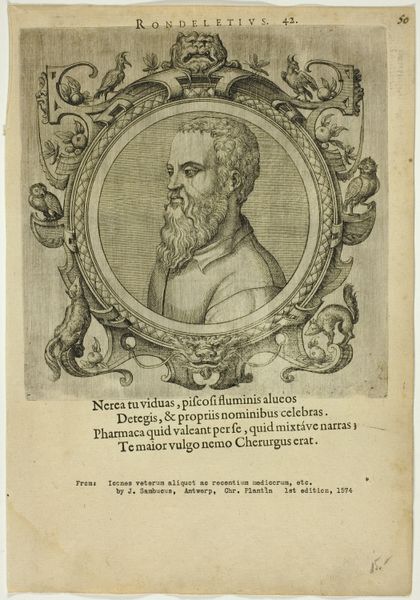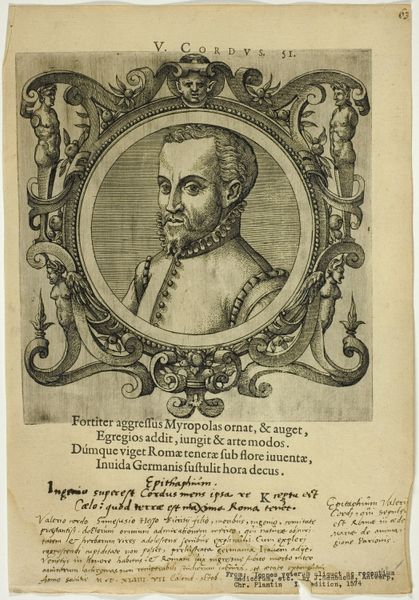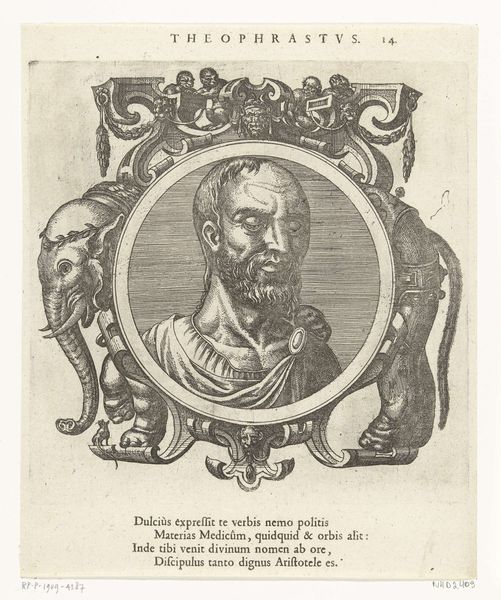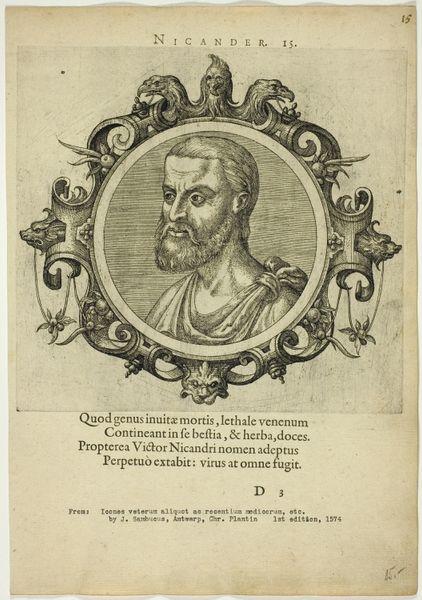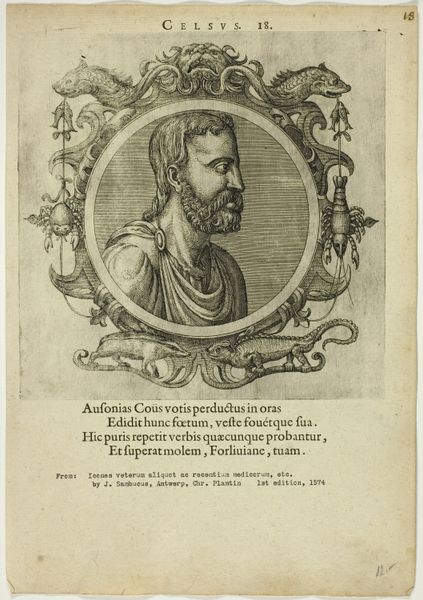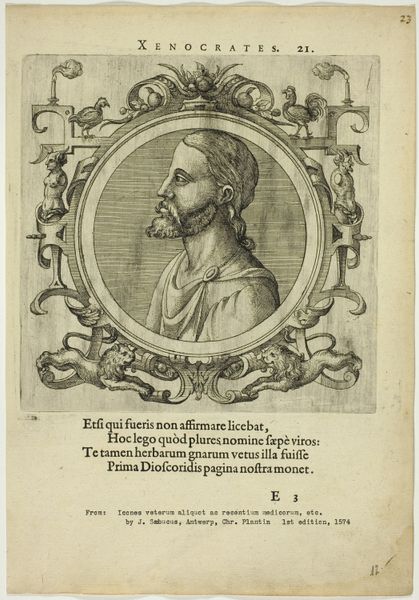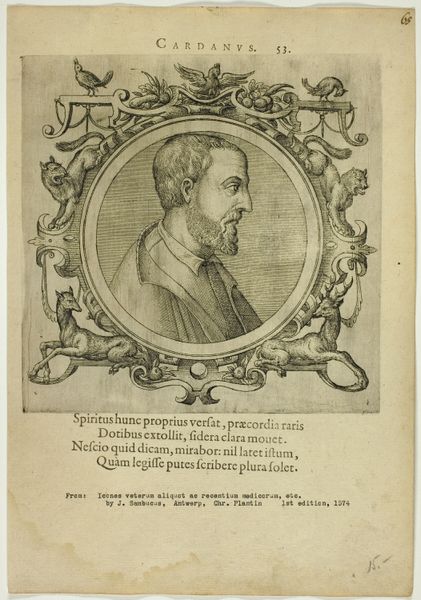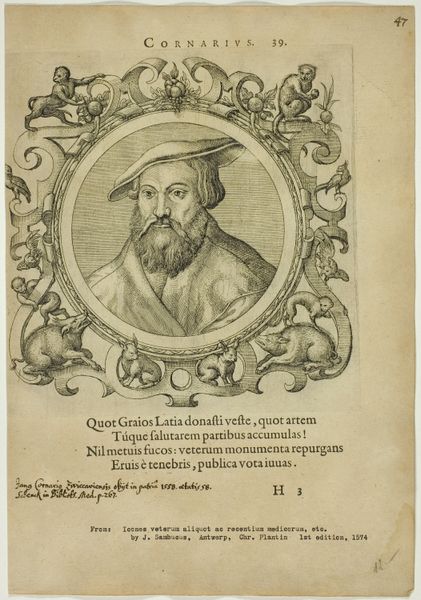
drawing, print, etching, paper, engraving
#
portrait
#
drawing
# print
#
etching
#
old engraving style
#
paper
#
11_renaissance
#
engraving
Dimensions: 188 × 195 mm (image/plate); 312 × 216 mm (sheet)
Copyright: Public Domain
Curator: Here we have a portrait etching entitled "Portrait of Ruffus," believed to be made around 1574 by Johannes Sambucus. It’s currently part of the Art Institute of Chicago's collection. Editor: The density of lines is what strikes me first. They build this incredibly somber, almost severe tone despite the rather ornamental frame. It’s not just a portrait, it feels like a pronouncement. Curator: Indeed. The etching technique, particularly the density and layering of the lines, contributes to that seriousness. Notice how the printmaking process would require an artisan well-versed in manipulating metal plates, acid, and ink – all quite material processes lending gravity and, arguably, authenticity to the image. The image was created through multiple stages of production, very much like today’s art. Editor: And then consider the symbolism layered into the decorative elements! Sphinxes and beasts adorn the frame. Could they perhaps allude to the subject's intellect, mystery, or guardianship of knowledge? I would suggest that such ornamentation indicates Ruffus was important. Curator: It's also quite striking, though, how mass-produced such images became, distributed among scholars and elite circles, driving the demand for the etching work. I mean, the "frame," to your point, could also just be part of what was a fashionable embellishment at the time, not specific symbolism related to Ruffus. Editor: Possibly, but that clashes, doesn't it? The man himself has such gravitas. I cannot escape this strong sensation that he carries himself in almost imperial form. Those creatures could indeed represent qualities he valued, things for which he strove. After all, iconography of any subject is deliberately tailored. Curator: What's compelling for me is the relationship between artist, material, and market – how such prints democratized image ownership, fostering Renaissance humanism with reproducible knowledge and portraiture. Editor: But each of these choices carries layers of meaning for the viewer! From these animals chosen for the decorative element of this symbolic man's symbolic image to the deliberate creation of aura in a period still clinging to traditions, "Portrait of Ruffus" shows us an era through its cultural lens. Curator: Ultimately, this exploration gives us an insight into how different values - knowledge, image-making, economic circumstance – collided during the Renaissance. Editor: It highlights the enduring power of images to carry and transmit coded, but perhaps intensely personal, cultural meaning to different generations.
Comments
No comments
Be the first to comment and join the conversation on the ultimate creative platform.
